第30章 WITH THE NIGHT MAIL(3)
Even in this thin air the lift-shunts are busy taking out one-third of its normal lift, and still "162" must be checked by an occasional downdraw of the rudder or our flight would become a climb to the stars. Captain Purnall prefers an overlifted to an underlifted ship; but no two captains trim ship alike. "When Itake the bridge," says Captain Hodgson, "you'll see me shunt forty per cent of the lift out of the gas and run her on the upper rudder. With a swoop upward instead of a swoop downward, as you say. Either way will do. It's only habit. Watch our dip-dial!
Tim fetches her down once every thirty knots as regularly as breathing."So is it shown on the dip-dial. For five or six minutes the arrow creeps from 6700 to 7300. There is the faint "szgee" of the rudder, and back slides the arrow to 6000 on a falling slant of ten or fifteen knots.
"In heavy weather you jockey her with the screws as well," says Captain Hodgson, and, unclipping the jointed bar which divides the engine-room from the bare deck, he leads me on to the floor.
Here we find Fleury's Paradox of the Bulk-headed Vacuum--which we accept now without thought--literally in full blast. The three engines are H.T.&T. assisted-vacuo Fleury turbines running from 3000 to the Limit--that is to say, up to the point when the blades make the air "bell"--cut out a vacuum for themselves precisely as over-driven marine propellers used to do. "162's"Limit is low on account of the small size of her nine screws, which, though handier than the old colloid Thelussons, "bell"sooner. The midships engine, generally used as a reinforce, is not running; so the port and starboard turbine vacuum-chambers draw direct into the return-mains.
The turbines whistle reflectively. From the low-arched expansion-tanks on either side the valves descend pillarwise to the turbine-chests, and thence the obedient gas whirls through the spirals of blades with a force that would whip the teeth out of a power saw. Behind, is its own pressure held in leash of spurred on by the lift-shunts; before it, the vacuum where Fleury's Ray dances in violet-green bands and whirled turbillons of flame. The jointed U-tubes of the vacuum-chamber are pressure-tempered colloid (no glass would endure the strain for an instant) and a junior engineer with tinted spectacles watches the Ray intently. It is the very heart of the machine--a mystery to this day. Even Fleury who begat it and, unlike Magniac, died a multi-millionaire, could not explain how the restless little imp shuddering in the U-tube can, in the fractional fraction of a second, strike the furious blast of gas into a chill greyish-green liquid that drains (you can hear it trickle) from the far end of the vacuum through the eduction-pipes and the mains back to the bilges. Here it returns to its gaseous, one had almost written sagacious, state and climbs to work afresh.
Bilge-tank, upper tank, dorsal-tank, expansion-chamber, vacuum, main-return (as a liquid), and bilge-tank once more is the ordained cycle. Fleury's Ray sees to that; and the engineer with the tinted spectacles sees to Fleury's Ray. If a speck of oil, if even the natural grease of the human finger touch the hooded terminals, Fleury's Ray will wink and disappear and must be laboriously built up again. This means half a day's work for all hands and an expense of, one hundred and seventy-odd pounds to the G.P.O. for radium-salts and such trifles.
"Now look at our thrust-collars. You won't find much German compo there. Full-jewelled, you see," says Captain Hodgson as the engineer shunts open the top of a cap. Our shaft-bearings are C.M.C. (Commercial Minerals Company) stones, ground with as much care as the lens of a telescope. They cost L837 apiece. So far we have not arrived at their term of life. These bearings came from "No. 97," which took them over from the old Dominion of Light which had them out of the wreck of the Persew aeroplane in the years when men still flew wooden kites over oil engines!
They are a shining reproof to all low-grade German "ruby"enamels, so-called "boort" facings, and the dangerous and unsatisfactory alumina compounds which please dividend-hunting owners and turn skippers crazy. The rudder-gear and the gas lift-shunt, seated side by side under the engine-room dials, are the only machines in visible motion. The former sighs from time to time as the oil plunger rises and falls half an inch. The latter, cased and guarded like the U-tube aft, exhibits another Fleury Ray, but inverted and more green than violet. Its function is to shunt the lift out of the gas, and this it will do without watching. That is all! A tiny pump-rod wheezing and whining to itself beside a sputtering green lamp. A hundred and fifty feet aft down the flat-topped tunnel of the tanks a violet light, restless and irresolute. Between the two, three white-painted turbine-trunks, like eel-baskets laid on their side, accentuate the empty perspectives. You can hear the trickle of the liquefied gas flowing from the vacuum into the bilge-tanks and the soft gluck-glock of gaslocks closing as Captain Purnall brings "162"down by the head. The hum of the turbines and the boom of the air on our skin is no more than a cotton-wool wrapping to the universal stillness. And we are running an eighteen-second mile.
I peer from the fore end of the engine-room over the hatch-coamings into the coach. The mail-clerks are sorting the Winnipeg, Calgary, and Medicine Hat bags; but there is a pack of cards ready on the table.
Suddenly a bell thrills; the engineers run to the turbine-valves and stand by; but the spectacled slave of the Ray in the U-tube never lifts his head. He must watch where he is. We are hard-braked and going astern; there is language from the Control Platform.